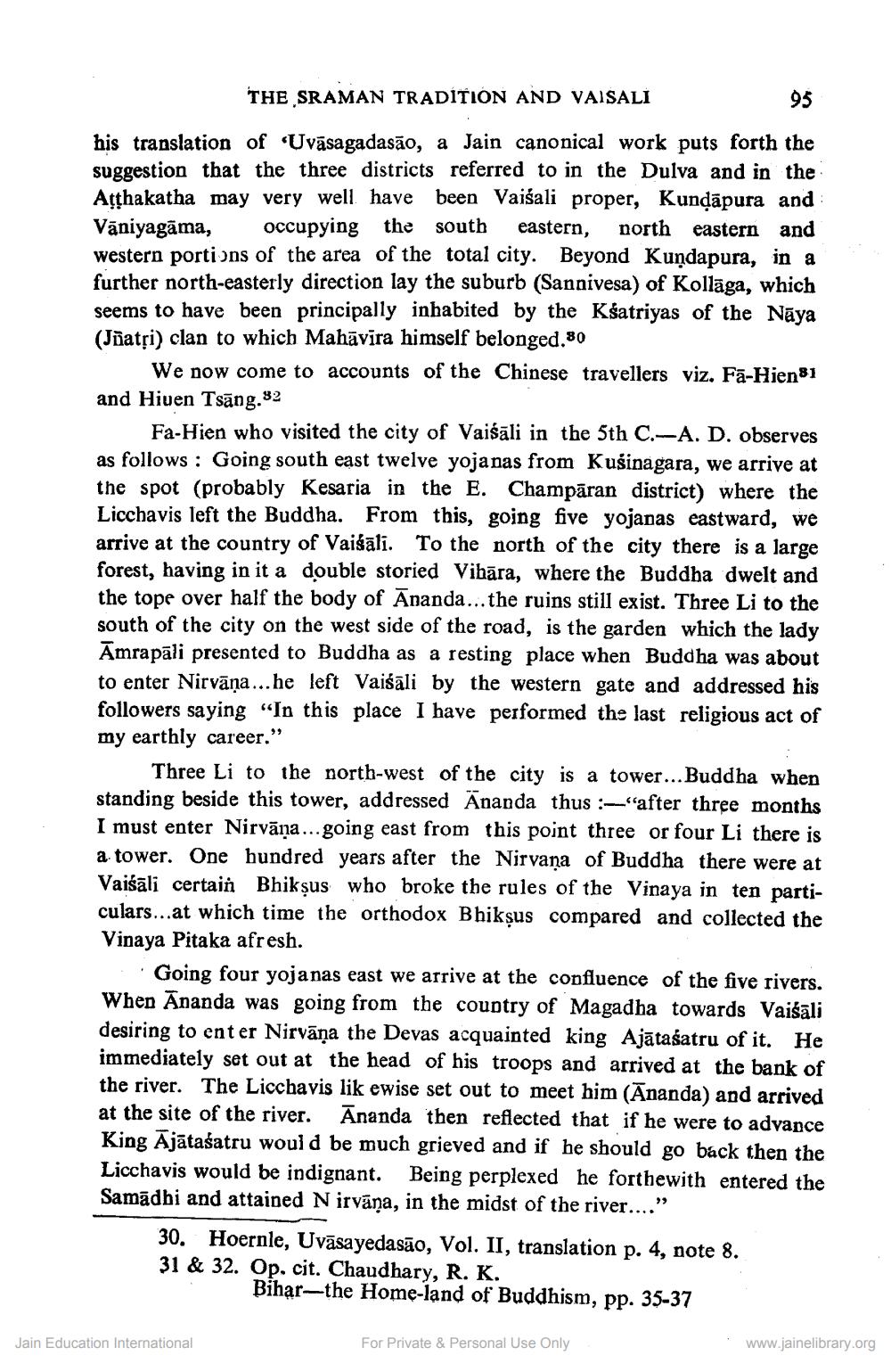________________
THE SRAMAN TRADITION AND VAISALI
95
his translation of Uvasagadasão, a Jain canonical work puts forth the suggestion that the three districts referred to in the Dulva and in the Atthakatha may very well have been Vaišali proper, Kunḍāpura and Vāniyagama, occupying the south eastern, north eastern and western portions of the area of the total city. Beyond Kundapura, in a further north-easterly direction lay the suburb (Sannivesa) of Kollaga, which seems to have been principally inhabited by the Ksatriyas of the Naya (Jñatṛi) clan to which Mahāvīra himself belonged.80
We now come to accounts of the Chinese travellers viz. Fa-Hien81 and Hiuen Tsang.32
Fa-Hien who visited the city of Vaiśāli in the 5th C.-A. D. observes as follows: Going south east twelve yojanas from Kušinagara, we arrive at the spot (probably Kesaria in the E. Champaran district) where the Licchavis left the Buddha. From this, going five yojanas eastward, we arrive at the country of Vaiśāli. To the north of the city there is a large forest, having in it a double storied Vihara, where the Buddha dwelt and the tope over half the body of Ananda...the ruins still exist. Three Li to the south of the city on the west side of the road, is the garden which the lady Amrapali presented to Buddha as a resting place when Buddha was about to enter Nirvana...he left Vaisali by the western gate and addressed his followers saying "In this place I have performed the last religious act of my earthly career."
Three Li to the north-west of the city is a tower... Buddha when standing beside this tower, addressed Ananda thus :-"after three months I must enter Nirvana...going east from this point three or four Li there is a tower. One hundred years after the Nirvana of Buddha there were at Vaiśāli certain Bhiksus who broke the rules of the Vinaya in ten particulars...at which time the orthodox Bhiksus compared and collected the Vinaya Pitaka afresh.
Going four yojanas east we arrive at the confluence of the five rivers. When Ananda was going from the country of Magadha towards Vaišali desiring to enter Nirvana the Devas acquainted king Ajataśatru of it. He immediately set out at the head of his troops and arrived at the bank of the river. The Licchavis lik ewise set out to meet him (Ananda) and arrived at the site of the river. Ananda then reflected that if he were to advance King Ajātaśatru would be much grieved and if he should go back then the Licchavis would be indignant. Being perplexed he forthewith entered the Samadhi and attained Nirvana, in the midst of the river...."
30. Hoernle, Uvasayedasão, Vol. II, translation p. 4, note 8. 31 & 32. Op. cit. Chaudhary, R. K.
Bihar-the Home-land of Buddhism, pp. 35-37
Jain Education International
For Private & Personal Use Only
www.jainelibrary.org




